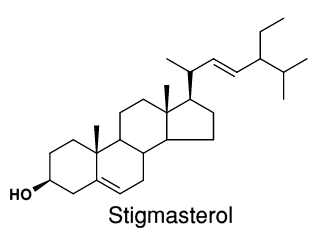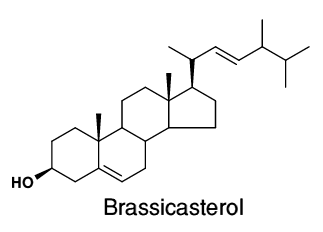Not to be semantically confused with : any Toadflax es such as Purple Toadflax (Linaria purpurea), Ivy-leaved Toadflax (Cymbalaria muralis), Sand Toadflax (Linaria arenaria), Malling Toadflax (Chaenorhinum origanifolium), Bastard Toadflax (Thesium humifusum) Flax Dodder (Cuscuta epilinum), Flaxfield Rye-grass (Lolium remotum), New-Zealand Flax (Phormium tenax), Toadflax-leaved St John's-wort (Hypericum linariifolium) [plants with similar names belonging to differing families]
Slight resemblance to : Perennial Flax
The fibres from the stems of Flax are used to make Linen, derived from the latin name for flax. Flax was grown extensively in the UK during WWI to make parachutes for the Air Force because silk was in very short supply and Flax was easy to grow and linen a strong fabric. The fibres are also used in making textiles, carpets, twine, ropes and bags.
There are 10 valves in the fruiting capsule, containing one seed each. The seeds are crushed to yield an oil called linseed oil which is used to 'oil' cricket bats, in oil paints, in varnishes and printing inks, as well as taken orally to treat chronic constipation and irritable colons, spasmodic colitis and diverticulitis.
Cultivated Flax flowers exhibit the property of being distylous, that is, there are two flower types, one where the stamens are longer than the style (thrum form), and one where it is vice versa (pin form). Only the opposite forms can fertilise each other. See Primrose for fuller explanation.
The flowers exhibit Heterostyly, whereby some flowers have stamens longer than the stigmas whilst in other flowers it is the other way around. The pin form has longer styles, the thrum form longer stamens.
Plants in the UK are the endemic Linum perenne ssp. anglicum.
The oil from linseed oil derived from Flax was once used to make linoleum. For this, Linseed oil was partially oxidized by heating it with lead acetate Pb(CH2COOH)4 and zinc sulfate ZnS in order to transform it into a solid resin called 'linoxyn', which used together with pine rosins was the resinous material within linoleum. The word 'Linoleum' was derived from the scientific name for Flax, Linum and the oil derived from it 'oleum'. Contrary to expectations, however, it was strengthened not by flax fibres, but by a hessian or canvas backing, and in-filled with fillers such as cork ground into dust, calcium carbonate or other similar inert minerals and pigments. The surface is made harder by coating the upper surface with more oxidized resins onto which patterns are often printed and the surface embossed as desired. Unlike ceramic tiles, it is moderately flexible. Linoleum, shortened to 'lino' was used for a hard-wearing waterproof floor covering. Despite the experience your Author had printing with lino in primary school in the late 1950's, Linotype has got nothing whatsoever to do with linoleum.
Nowadays 'linoleum' is made from less flammable PVC, polyvinylchloride, (CH2CHCl)n, an organochloride, and admixed with plasticizers such as phthalates or Bisphenol A to make it more pliable and less brittle. The later plasticizer (and its numerous analogues) possesses (even in trace quantities) unwanted oestrogenic hormonal effects in mammals and aquatic creatures such as frogs and fish, leading either to increased F/M ratios in new-born fish, or early puberty in girls and under-development in boys sexual organs including reduced sperm production, or sterilization of water snails, it's effects are quite disastrous throughout the animal world. Bisphenol A and its analogues are used in a wide variety of consumer goods and food containers, such as plastic bottles, water-pipes, hose-pipes and on the inner coating of tinned food cans. As consumers, we are ingesting minute doses of harmful oestrogenic compounds daily by mouth, whose effects are thought to be cumulative.
CYANOGENIC GLYCOSIDES




The only difference between upper and lower molecules in the structural formulae above are the extra CH2 of the lower molecules.
Linseed oil is obtained from the seeds of flax, The name Linseed which is derived from the latin name for flax, Linum.
The seeds of Flax contain up to 1% in total of four cyanogenic glycosides illustrated above. The enzyme Linamarase (not shown) which is present within the cell but unable to gain access to the cyanogenic glycosides until the cell membranes are ruptured will, will - when the cells are ruptured, liberate both prussic acid [HCN] and acetone [(CH3)2CO] from the cyanogenic glycoside, whilst at the same time releasing the chemically-bound sugar units.
Both Linamarin and Lotaustralin are mono-glycosides, whereas Linustrin and Neolinustrin are di-glycosides. The liberated hydrocyanic acid is the toxic fraction, preferentially (above that of oxygen) binding to haemoglobin, thus depriving the body (and brain) of essential oxygen. Thus death from asphyxiation is the result of cyanide poisoning. The released acetone is mild by comparison (unlike the cyanide) and there is not enough of it to be detrimental to health; but the cyanide will kill before the acetone has a chance to do anything. (The lower two glycosides will probably, because of the extra CH2, liberate MethylEthylKetone [MEK ] rather than acetone [aka dimethyl ketone]).
Treatment for cyanide poisoning can include intravenous injection of sodium nitrite, which oxidizes the haemoglobin to methaemoglobin. This, however, is not innocuous, as this is the modus operandi of nitrite poisoning: the oxygen cannot now bind to methaemoglobin, but the cyanide will instead preferentially bind to methaemoglobin, the result being the same as with the cyanide: lack of oxygen for the brain and muscles. The resulting condition methaemoglobinemia also needs to be treated (using large doses of methylene blue [aka methylthionium chloride]). A further intravenous injection of sodium thiosulfate converts the cyanmethaemoglobin into thiocyanate (which is readily excreted), sulfite, and haemoglobin. Finally, inhalation of amyl nitrate will dilate the blood vessels, increasing blood flow. This is a fairly involved and protracted process and a good outcome is not necessarily guaranteed. Other methods for treating cyanide poisoning are being worked upon.
As an aside,  Methylene Blue (a synthetic blue dye not present in any plant) is also used to treat a wide range of other diverse conditions. Methylene Blue (a synthetic blue dye not present in any plant) is also used to treat a wide range of other diverse conditions.
The seeds of other species of flax such as L. catharticum, L. flavum, L. perrene, L. narbonense and L. grandiflorum also contain these cyanogenic glycosides. Animals fed on large amounts of seed-cake or linseed will have spasms, suffer paralysis, and possibly death by cyanide poisoning. Human poisoning from consuming flax seeds are rarely fatal since the seeds, being so small, would be swallowed whole.
For Modus Operandi of Cyanogenic Glycosides, see Bracken
|
TRITERPENE STEROIDS
Several triterpene steroids are also present in species of flax. As can be seen, these four sterols are chemically similar to each other, and therefore to cholesterol. All four are possess one functional alcohol group (lower left). They are insoluble in water but soluble in plant oils or fats.
These so-called phytosterols may, somewhat paradoxically, help to inhibit the uptake of cholesterols in the diet. Paradoxical, because cholesterol is itself one! A vegetable oil marketed under the collective name of cholestatin which contains campesterol , stigmasterol and Brassicasterol (but specifically not cholesterol) is used as a dietary supplement for the reduction of blood cholesterol (which in mammals is normally used within cell membranes).
Campesterol is transported out of the body by low density LDL molecules, which are presumably activated and transport cholesterol out at the same time.





Stigmasterol , alone here, is an un-saturated sterol, in that the side branch has a double bond.
It is used as the starting material in the synthetic production of Progesterol, a human hormone. Stigmasterol itself may also have useful pharmacological properties in helping prevent certain cancers such as colon, ovarian and prostrate.
Brassicasterol is a steroid found not only in many species of Brassica, such as Oil-Seed Rape but also in Cultivated Flax. It also widely occurs in several marine algae (phytoplankton) and has been used as a bio-marker for the presence of marine algal matter in the environment. It is chemically related to Campesterol, Cholesterol and more closely to Stigmasterol.
Campesterol occurs in low concentrations in many vegetable, fruits, nuts and seeds, including Flax. Much larger concentrations (between 1 to 7mg/100g) are found in Banana, Coffee, Cucumber , Grapefruit, Lemon Grass, Oat s, Onion , and Potatoes. Cooking oils such as Corn Oil and Canola contain far higher concentrations, between 16-100mg/100g. It was first discovered in the seeds of Oil-Seed Rape (Brassica nappa ssp. campestris) from which Rape Seed Cooking oil is derived, and was thus named after it. In the human body it reduces the uptake of Cholesterol in the intestines, perhaps by selective competition, although it seems to pose health risks of its own.
Cholesterol is synthesized within the human body and is an essential constituent of cell membranes in mammals. It is also ingested in considerable quantities in the diet by way of phytosterols generated within plants. High values of cholesterol in the blood are a health concern, because of its ability to coat the inside of blood vessels and thus block blood-flow within capillaries.
Cholesterol is also the insulating substance within the myelin sheath of Schwann cells, which wrap around the axons of neurons to electrically isolate them from their surroundings, thus enormously speeding up the transmission of electrical impulses over large distances within the mammalian body. As such, cholesterol is indispensable, but too much is a bad thing. If the myelin sheath is imperfect or thin, then neurons can leak their electrical impulses to nearby neurons. This leakiness may, contrary to belief, increase the intelligence of those so afflicted, for well-connected neurons bestow greater intelligence. It has long been suspected that those with mild psychological or neurological conditions such as Autism, Parkinsons or mild Alzheimers have a greater intelligence and creativity, even to such an extent as to have savant capabilities. Professor Steven Hawking is just one example from the many that abound. Leaky myelin sheaths on neurons within the brain could paradoxically contribute to this enhanced brain performance due to greater but unintended connectivity between neurons.
|
PODOPHYLLOTOXINS

Podophyllotoxin (pharmaceutically called Podofilox) is a lignan(e). The singly-methylated version of podophyllotoxin, 5-MethoxyPodophyllotoxin, (and other lignanes) are also present in flax, mainly in the roots. Note that only Podophyllotoxin is shown; the methoxy group -O-CH3 substitutes a hydrogen atom at position 5 on the benzene ring. Some Linum species (especially Linum catharticum have been used as purgatives on account of their podophyllotoxin content. Podophyllotoxins cause severe diarrhoea and block the process of cell division; they are thus toxic as their name suggests. The podophyllotoxins (and PinoResinols) are extremely allergenic, responsible for over 2 million poisoning incidents. Rhus contact dermatitis is persistent and can last for weeks, months or even years; and long-delayed relapse is common. Eye contact can lead to blindness. Podofilox (podophyllotoxin) is used to treat genital warts since it has a keratolytic action. It is also used phamaceutically as an anti-tumour and anti-cancer agent.
The symptoms of oral poisoning by podophyllotoxins is strong irritation of the mucosa and eyes, serious gastroenteritis, abdominal colic, vomiting, diarrhoea, cough, tachycardia, arrhythmia, polyneuritis, central & peripheral nervous system damage, nephritis, spasms, delirium, coma and finally death by respiratory arrest.
Podophyllotoxin is also contained in plants of Genus Podophyllum such as American Mayapple (Podophyllum peltatum) and others in the Barberry Family (Berberidaceae), in members of the Milkwort Genus (Polygalaceae), members of the Anthriscus Genus (Bur Chervil) and also in the Juniperus Genus.
|
|
![]()
![]()
![]()
![]()
![]()
![]()
![]()
_2007_07_11_IanPaterson_Flax_SouthKyme_Lincolnshire_p2_.jpg)
_2009_06_09_BlackleachResr_100p1.jpg)
_2009_06_09_BlackleachResr_01p6.jpg)
_2007_08_13_Chesterfield_canal_KivetonBridge_507p9.jpg)
_2007_08_13_Chesterfield_canal_KivetonBridge_504p2.jpg)
_2007_08_13_Chesterfield_canal_KivetonBridge_506p4.jpg)
_2007_08_13_Chesterfield_canal_KivetonBridge_510p5.jpg)
_2009_06_09_BlackleachResr_101p2.jpg)
_2009_06_09_BlackleachResr_08p9.jpg)
_2013_09_02_ChesterfieldCanal_Staveley_Renishaw_KivertonPark_074p3.jpg)
_2013_09_02_ChesterfieldCanal_Staveley_Renishaw_KivertonPark_059p99.jpg)
_2013_09_02_ChesterfieldCanal_Staveley_Renishaw_KivertonPark_060p2.jpg)
_2009_06_27_BlackleachResr_Ringley_canal_Bury_135p4.jpg)